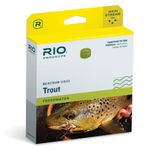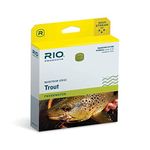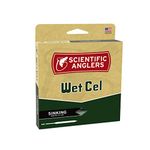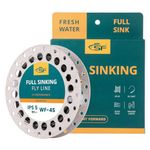10 bestTrout Fly Linesof January 2026
112M consumers helped this year.
1

Redington Freshwater Fly Fishing Kit, 5 Weight 9 Foot Trout Rod, Crosswater Reel, Fly Line, Leader, & Carrying Case
REDINGTON

10.0
2
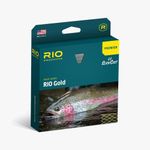
Rio Premier Gold Fly Line, Easy to Cast Flies from Size 2 to 22, Ultimate All-Around Fly Line with Ultra-Slick Performance, Melon/Gray Dun, 90ft, WF5F
Rio

10.0
3

Scientific Anglers Amplitude Smooth Infinity Fly Line (Optic Green, WF-5-F)
Scientific Anglers

9.7
4
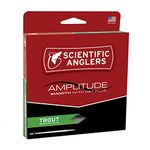
Scientific Anglers Amplitude Smooth Trout Fly Line | WF-2-F
Scientific Anglers

9.4
5
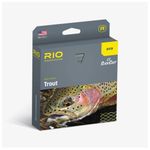
Rio Products Avid Trout Series - Gold, Floating Fly Line for Trout, WF5F
Rio

9.1
Other
6
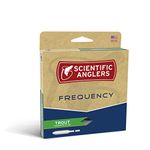
Scientific Anglers WF-5-F Frequency Floating Trout Line
Scientific Anglers

8.8
7
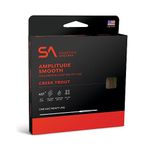
Scientific Anglers Amplitude Smooth Creek Trout Fly Line WF-6-F
Scientific Anglers

8.5
8
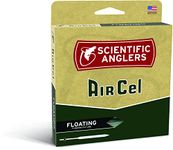
Scientific Anglers Air Cel Floating Lines, Yellow, WF- 5-F
Scientific Anglers

8.2
9
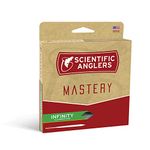
Scientific Anglers Mastery Infinity Fly Line - WF5F
Scientific Anglers

8.0
10
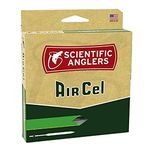
Scientific Anglers Air Cel Species Specific Series Trout Floating Lines, Green, 42496
Scientific Anglers

7.7
A Guide to Selecting the Best Trout Fly Lines
Choosing the right trout fly line is essential for a successful and enjoyable fly fishing experience. The fly line is the critical link between your fly rod and the fly itself, affecting how you cast, how your fly lands on the water, and how you present your fly to the fish. Understanding the main features of fly lines will help you select one that matches your fishing style, the waters you fish, and the trout you’re targeting.
Line Weight
Line weight refers to the thickness and mass of the fly line, usually rated from 1 to 12, with lower numbers being lighter and higher numbers heavier. This is important because it needs to match the weight rating of your fly rod and reel for optimal casting and control. Lighter lines (1-4) are best for small streams and delicate presentations, while medium weights (5-6) are versatile for most trout fishing situations. Heavier lines (7 and above) are used for larger flies, windy conditions, or bigger trout. To pick the right line weight, consider the size of the water, the typical size of trout, and the flies you plan to use.
Line Taper
Line taper describes how the thickness of the fly line changes from one end to the other. The most common tapers are weight-forward (WF) and double taper (DT). Weight-forward lines have most of their weight near the front, making them easier to cast longer distances and handle wind, which is great for beginners and general use. Double taper lines are more balanced and allow for delicate presentations and easy roll casting, ideal for small streams and precise fishing. Choose a taper based on your casting style and the type of water you fish most often.
Line Density
Line density determines whether the fly line floats, sinks, or does something in between. Floating lines stay on the surface and are the most popular for trout fishing, especially for dry flies and nymphs in shallow water. Sinking lines or sink-tip lines are designed to get your fly deeper, useful for fishing in deep pools or fast currents. Intermediate lines sink slowly and are good for fishing just below the surface. Your choice should depend on the depth of water you fish and the type of flies you use.
Line Color
Line color can affect both your visibility and the fish’s ability to see the line. Brightly colored lines are easier for you to see, which helps with tracking your cast and detecting strikes, but may be more visible to fish in clear water. Subdued or camouflaged colors are less likely to spook fish but can be harder for you to track. If you fish in clear, calm water, a subtle color may be best, while in rough or murky water, a brighter line can be helpful.
Line Coating and Texture
The coating and texture of a fly line affect how smoothly it shoots through the guides and how well it floats or sinks. Some lines have a slick coating or micro-texture to reduce friction and improve casting distance, while others are smooth for quieter presentations. If you value long casts and easy line management, look for lines with advanced coatings or textures. For delicate presentations, a smooth, traditional line may be preferable.
Best Reviews Guide Newsletter
Get exclusive articles, recommendations, shopping tips, and sales alerts
Sign up for our newsletter to receive weekly recommendations about seasonal and trendy products
Thank you for subscribing!
By submitting your email address you agree to our Terms and Conditions and Privacy Policy
